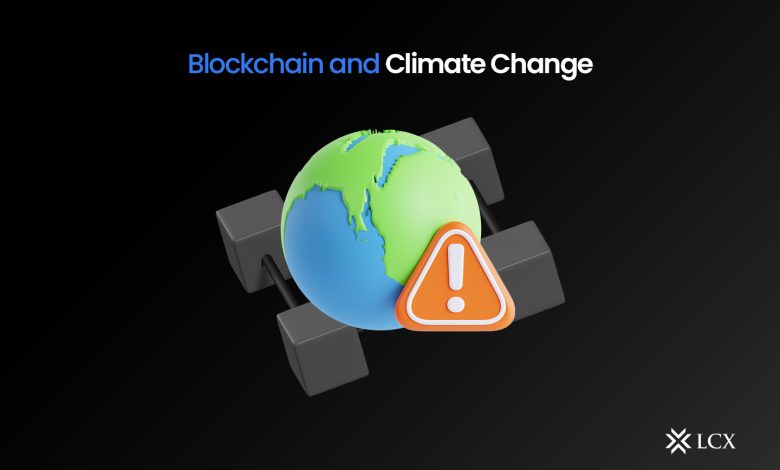Blockchain Technology and Climate Change

- Understanding the role of blockchain technology in combating climate change
- Exploring the potential of blockchain technology to reduce carbon emissions
- The intersection of blockchain technology and sustainable energy solutions
- How blockchain can revolutionize the fight against climate change
- Challenges and opportunities of integrating blockchain technology in climate change initiatives
- Case studies showcasing the impact of blockchain technology on environmental conservation
Understanding the role of blockchain technology in combating climate change
Blockchain technology has emerged as a powerful tool in the fight against climate change. By providing a transparent and secure way to track transactions and data, blockchain can help reduce carbon emissions and promote sustainability. One of the key ways blockchain can combat climate change is by enabling the creation of carbon markets. These markets allow companies to buy and sell carbon credits, incentivizing them to reduce their emissions. Additionally, blockchain can be used to track and verify renewable energy generation, ensuring that energy comes from sustainable sources.
Exploring the potential of blockchain technology to reduce carbon emissions
Exploring the potential of blockchain technology to reduce carbon emissions is a promising avenue for addressing the urgent issue of climate change. By leveraging the decentralized and transparent nature of blockchain, various industries can track and verify carbon emissions more accurately and efficiently. This can lead to better accountability and incentivize companies to reduce their carbon footprint.
One way blockchain technology can help reduce carbon emissions is through the creation of carbon offset markets. These markets allow companies to buy and sell carbon credits, which represent the reduction of one ton of carbon dioxide. By using blockchain to track these transactions, the process becomes more secure and transparent, reducing the risk of fraud and ensuring that carbon credits are legitimate.
Furthermore, blockchain can enable the creation of smart contracts that automatically execute transactions when certain conditions are met. This can be used to incentivize sustainable practices, such as rewarding companies for meeting emissions targets or investing in renewable energy sources. By automating these processes, blockchain can streamline the transition to a low-carbon economy.
The intersection of blockchain technology and sustainable energy solutions
Blockchain technology has the potential to revolutionize the way we approach sustainable energy solutions. By leveraging the decentralized and transparent nature of blockchain, we can create more efficient and reliable systems for managing energy production and distribution. This intersection of blockchain technology and sustainable energy solutions offers a promising path towards combating climate change and reducing our reliance on fossil fuels.
One of the key benefits of integrating blockchain technology into sustainable energy solutions is the ability to create a more secure and tamper-proof system. By recording energy production and consumption data on a blockchain network, we can ensure that the information is accurate and cannot be altered or manipulated. This level of transparency can help to build trust among stakeholders and encourage greater investment in renewable energy sources.
Additionally, blockchain technology can enable more efficient peer-to-peer energy trading, allowing individuals and businesses to buy and sell excess energy directly to one another. This can help to optimize energy usage, reduce waste, and lower costs for consumers. By decentralizing the energy market in this way, we can create a more resilient and adaptable system that is better equipped to handle the challenges of climate change.
Overall, the intersection of blockchain technology and sustainable energy solutions holds great promise for addressing the urgent need to transition to a more sustainable and environmentally friendly energy system. By harnessing the power of blockchain, we can create a more transparent, efficient, and secure energy infrastructure that will benefit both the planet and future generations.
How blockchain can revolutionize the fight against climate change
Blockchain technology has the potential to revolutionize the fight against climate change by providing transparency, traceability, and accountability in environmental initiatives. By utilizing blockchain, organizations can create immutable records of carbon emissions, renewable energy production, and sustainability efforts. This level of transparency can help build trust among stakeholders and ensure that climate action is being taken seriously.
One of the key benefits of blockchain in combating climate change is its ability to streamline carbon trading and offsetting processes. Through smart contracts, carbon credits can be tokenized and traded efficiently, reducing the complexity and costs associated with traditional carbon markets. This can incentivize companies to reduce their carbon footprint and invest in sustainable practices.
Furthermore, blockchain can enable the creation of decentralized energy grids, where individuals can buy and sell excess renewable energy directly to one another. This peer-to-peer energy trading can help optimize energy usage, reduce waste, and promote the adoption of clean energy sources. By decentralizing energy production and distribution, blockchain can help accelerate the transition to a low-carbon economy.
Challenges and opportunities of integrating blockchain technology in climate change initiatives
Integrating blockchain technology in climate change initiatives presents both challenges and opportunities for the global community. The decentralized nature of blockchain allows for transparent and secure transactions, which can be leveraged to track and verify carbon emissions, promote renewable energy trading, and incentivize sustainable practices. However, the complexity of implementing blockchain solutions, the need for standardization, and the high energy consumption associated with some blockchain networks pose significant challenges.
One of the key challenges of integrating blockchain technology in climate change initiatives is the lack of regulatory frameworks and interoperability between different blockchain platforms. Without clear guidelines and standards, it can be difficult to ensure the accuracy and reliability of data recorded on the blockchain. Additionally, the high energy consumption of some blockchain networks, such as Bitcoin, raises concerns about the environmental impact of blockchain technology.
On the other hand, blockchain technology offers opportunities to revolutionize climate change initiatives by enabling transparent and traceable transactions, reducing fraud and corruption, and empowering individuals to participate in carbon markets. By using smart contracts and decentralized applications, blockchain can streamline processes, reduce transaction costs, and increase the efficiency of climate change projects.
Case studies showcasing the impact of blockchain technology on environmental conservation
Several case studies have demonstrated the positive impact of blockchain technology on environmental conservation efforts. By leveraging blockchain’s transparency, security, and decentralization, organizations are able to track and verify environmental data more effectively, leading to improved conservation outcomes. Here are some examples of how blockchain technology is being used to address climate change:
- Carbon Offsetting: Blockchain platforms are being used to facilitate carbon offsetting projects by enabling transparent tracking of carbon credits. This ensures that companies and individuals can accurately measure and offset their carbon footprint, contributing to overall emissions reductions.
- Supply Chain Traceability: Blockchain is being utilized to track and verify the sustainability of products throughout the supply chain. This helps consumers make more informed choices about the environmental impact of the products they purchase, encouraging companies to adopt more sustainable practices.
- Renewable Energy Trading: Blockchain technology is enabling peer-to-peer trading of renewable energy, allowing individuals and communities to buy and sell excess energy generated from renewable sources. This decentralized approach promotes the use of clean energy and reduces reliance on fossil fuels.
- Forest Conservation: Blockchain is being used to monitor and verify forest conservation efforts, such as reforestation projects and sustainable logging practices. By creating a transparent record of forest management activities, blockchain helps ensure the preservation of vital ecosystems.



